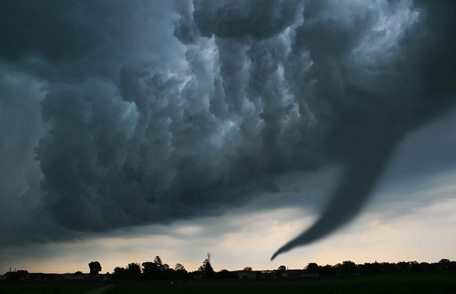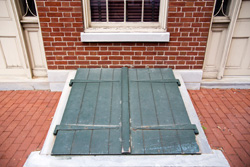Staying Safe in a Tornado
Posted on by
To stay safe during a tornado, prepare a plan and an emergency kit, stay aware of weather conditions during thunderstorms, know the best places to shelter both indoors and outdoors, and always protect your head.
Tornadoes continue to impact locations across the country every year, bringing massive winds and destruction in their paths.
The 2016 tornado season claimed the lives of 18 individuals and injured another 325. Seventy-eight percent of those victims were in a mobile home or trailer park at the time of the tornado. These storms caused an estimated $183 million in property damage.
According to the National Oceanic and Atmospheric Agency (NOAA) there is no guaranteed safety during a tornado. Even the possibility of a tornado must be taken seriously. Although the most violent tornadoes can level and blow away almost any house and those within it, extremely violent EF5 tornadoes are very rare. Most tornadoes are much weaker. You can survive a tornado if you follow safety precautions. Here are three important tips to help keep you safe.

TIP: Be prepared.
The best way to stay safe during a tornado is to be prepared with:
- fresh batteries and a battery-operated TV, radio, or internet-enabled device to listen to the latest emergency weather information;
- a tornado emergency plan including access to a “safe shelter” for yourself and for people with special needs;
- an emergency kit (including water, non-perishable food, and medication); and
- a list of important information, including telephone numbers.
Make sure your children know what a tornado is, what tornado watches and warnings are, what county or parish they live in (warnings are issued by county or parish), and what constitutes a location as a “safe shelter,” whether at home or at school.
TIP: Stay aware of weather conditions.
To protect yourself and your family from harm during a tornado, pay close attention to changing weather conditions in your area. If you know thunderstorms are expected, stay tuned to local radio and TV stations or an NOAA weather radio for further weather information. Some tornadoes strike rapidly without time for a tornado warning. The following weather signs may mean that a tornado is approaching:
- a dark or green-colored sky;
- a large, dark, low-lying cloud;
- large hail; or
- a loud roar that sounds like a freight train.
If you notice any of these conditions, take cover immediately, and keep tuned to local radio and TV stations or to a NOAA weather radio or check the internet.
TIP: Know where to shelter.
Falling and flying debris cause most deaths and injuries during a tornado. Although there is no completely safe place during a tornado, some locations are much safer than others.
- Go to the basement or an inside room without windows on the lowest floor (bathroom, closet, center hallway).
- Avoid windows.
- For added protection get under something sturdy (a heavy table or workbench). Cover your body with a blanket, sleeping bag or mattress. Protect your head with anything available.
- Do not stay in a mobile home.
If you are outside or in a mobile home, find a nearby building preferably with a basement. If you are in a car, do not try to outrun a tornado but instead find the nearest sturdy building. NOTE: You may need to change your plans and change locations when the tornado watch is issued.
No one can know a tornado’s strength before it touches down, so keep up with local weather information, especially when thunderstorms are forecast. Prepare your home and family for the possibility of a tornado. Moving to shelter quickly is easier when everyone knows where to go, whether in your home or outdoors. Following these tips will give you the best chance for staying safe in a tornado.
Learn more about how to stay safe during a tornado.
More Information
Tweet this: “CDC wants you to 1) be prepared; 2) stay aware; and, 3) be protected during a tornado. Learn important tips for these 3 steps at https://bit.ly/2JMInQx #CDCEHblog via @CDCEnvironment”


Post a Comment